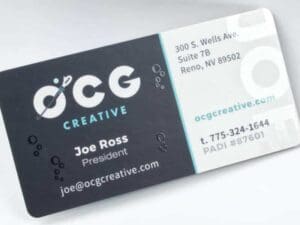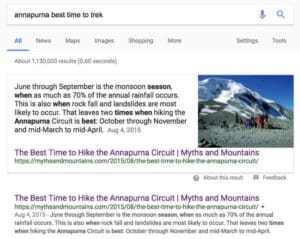Hana Abaza is the head of Marketing for Shopify Plus, Shopify’s eCommerce platform for big-name online stores and brands. Hana has had years of experience in a variety of leadership roles, including being both the Head of Strategy and VP of Marketing for Uberflip, a content marketing software that aggregates a business’s content into one powerful user experience.
With her years of experience marketing to both individual customers and businesses alike, Hana has developed some valuable insights about the marketing funnel and the true buyer’s journey. She has found that a person’s journey is not so linear. In reality, people will switch back and forth between stages, drop out entirely only to re-enter later, or simply sit stagnant in a stage. With this in mind, how you engage with customers can (and probably should) be different than how you are currently. Basically, rather than have the customers conform to your sales process, consider your customer’s process and adapt to them.
Working with large brands at Shopify Plus means that Hana and her marketing team have spent plenty of time collaborating closely with sales teams. When working closely with a sales team, the most important key to being successful is to set shared goals. Hana’s sales and marketing teams share what’s called a “revenue playbook”. Essentially, a revenue playbook is a shared document that defines objectives, goals, and actions in response to both hitting and missing goals. Unlike a service-level agreement (SLA), a revenue playbook unites the sales and marketing teams into one unified team. As Hana puts it, acting as one team driven by the same goals leads to stronger communication and greater success. At OCG Creative, every day we are inspired by leaders in the marketing industry. For more information on Hana Abaza, visit her website to follow her work.
 I have worked with small business owners for a very long time. As a marketing agency, OCG Creative is approached every day by owners and managers looking for help meeting their growth objectives. Most often, they have something in mind. They’ll ask about building a website, utilizing social media, running print ads, or implementing more sophisticated tools like marketing automation, CRM or ERP. All of these tools are incredibly powerful, but must be focused on specific business goals. The purpose of this article is to provide tools to help you assess opportunities and better understand your competitive environment. Ultimately, the goal is to carve out a bigger share of your market—to help you to think and act like a much larger company.
I have worked with small business owners for a very long time. As a marketing agency, OCG Creative is approached every day by owners and managers looking for help meeting their growth objectives. Most often, they have something in mind. They’ll ask about building a website, utilizing social media, running print ads, or implementing more sophisticated tools like marketing automation, CRM or ERP. All of these tools are incredibly powerful, but must be focused on specific business goals. The purpose of this article is to provide tools to help you assess opportunities and better understand your competitive environment. Ultimately, the goal is to carve out a bigger share of your market—to help you to think and act like a much larger company.
The definition of “big” will vary depending on your perspective. For this purpose, we’ll define big based on market position, resources, perspective and operating practices. “Big” usually means market leaders in an industry or region. They not only dominate their market, but have ample resources to stay on top. The executive team is nimble and focused on growth strategies and market influences as much as daily operations. Management might be a team of two or twenty-two, so long as those criteria are met. In fact, all the requisite traits can be present in a single individual. Regardless of actual size, “big” companies have the brains and resources to continue to attract the most customers.
Smaller companies tend to share common characteristics. Almost always, the business was started by a passionate founder with mad skills and a sincere desire to be in the business he or she is in. Generally, that same individual works inside the business, performing all the duties required for daily operations. Focus is task oriented, and tactics are more about survival than growth and profits. There are many “lifestyle” business owners that wouldn’t have it any other way. But, for others, the “lifestyle” can evolve into a daily grind, which is not fun at all. It is possible to transform these kinds of companies. It begins with a shift in perspective.
Business leaders understand their first responsibility is to provide value to the company’s shareholders. Public or private, shareholders expect a profit from their investment in resources. If you own a small business, “shareholders” means YOU. Notice I said “resources” rather than invested capital? Resources certainly includes capital, but your greatest business resource is you. It is essential that you invest that resource wisely so that there is a handsome payoff for your primary shareholder. Treat your time like any other investment. Expect a profit, and invest differently if you aren’t seeing it.
Any business or industry worth being in has competitors. It is natural to view competition in terms of “us versus them” yet what really matters is market size, growth and relative market share. Here are a few terms big businesses use to asses their competitive landscape. TAM: TAM stands for total available market. This represents the total demand for your product or service. The TAM is usually a very large segment. Imagine a product like canned peas and all the producers and consumers that have an interest or need for them. It’s a lot. TAM is useful for assessing service businesses as well. The important thing is to understand the industry you are in and where it’s headed. SAM: This is the serviceable available market. This is the subset of the TAM that is within reach of your business. Trade organizations, business journals, the government and even your local university can help you determine or assess the SAM for your particular business segment. SOM: Sometimes termed, “where we play,” this is the serviceable obtainable market. It is the subset of the SAM your company is equipped to pursue. Once you understand the unbiased scope of your market, you can asses your position in it. For most, this requires a shift in strategic thinking. Knowing the numbers, how big your market is, and what it’s made up of will provide clues about your best moves, given your available resources.
It is often said that 90% of marketing dollars are wasted. There are hundreds of reasons, but one common theme underlying failed marketing efforts is that they focus on the business rather than the consumer. It might sound harsh, but no one cares that you’re the number 1 dry cleaner for over 60 years. Dry cleaning customers care that their shirts are clean and starched just the way they like. They care that they don’t have to park a block away. They care that your kids play soccer together. Marketing must be about the consumer. Your message needs address their desire to make their lives better through your product or service. How you deliver that message depends on the business you are in. Social media might be a huge influencer, or not at all. Same for radio commercials, PPC, etc. Before investing in marketing, be certain a given channel will reach your intended market, and get the messaging right.
It’s time to formulate a plan, so grab your pencil and make two columns on a sheet of paper. Label the first, “What I know.” Label the other, “What I need to know.” Start with the TAM, SAM and SOM. Chances are you’ll need to do some research. If so, unanswered questions go in the “need to know” column. Do the same for anything you can think of that is important to your business. In particular, list the things your customers care about like where they hang out, demographics, etc. Include what you know and don’t know about your competitors also. Eventually, you’ll want make multiple lists that are specific to each aspect of your business. Commonly, these will include customer segments, competitors and market forces. Chances are, you’ll discover dozens of things you “need to know.” The next step is to do the research to find answers. That process alone will shed light on potential strategic moves that will make you a stronger competitor. Longer term, the information you gather here can be used to form the basis of a reliable blueprint for growth. The important thing is to get started.

Without any other information, your potential customers will assume better businesses have better business cards. Chances are you don't give business cards much thought, but you should. Let's start with a story. About five years ago, we met a newly minted physical therapist. At the time, he was fresh out of physical therapy school and ready to blaze a path helping people get back into daily living. He had (still has) all the skill and personality to make a big difference for a lot of people, but first they would need to know he existed, let alone available to see patients. He chose to work independently through an office that housed several physical therapists, each competing for whatever patients would walk in. In order to avoid bias, the receptionist would direct visitors to a grouping of a dozen or so, you guessed it, business cards. We've been advocates of great business card design for decades, but this one physical therapist's experience sums up how important business card design really is. Right out of school, budget was a major concern, but we convinced him even expensive business cards are cheap--especially if it's your only form of marketing. In the end, I think 1,000 cards cost him maybe $150, plus a little bit of design time. Altogether, he probably paid about a quarter a card for that first order. That's quite a bit when you consider some places will sell you a thousand business cards for $25. That cost difference translates to a lot of ramen noodles, which is an important consideration at the early stage of any career.

Before I skip to the end of the story, let me introduce you to the concept of opportunity cost. Opportunity cost is the future pain you inflict on yourself, measured in dollars, for being unable or unwilling to make a good decision today. In this case, the good decision was to invest an extra $125 in business cards that made him look awesome compared to the competing therapists. From the very first day, he crushed them. Literally, all of the patients that walked in the door chose him over the others. Today, he has his own thriving practice, to which, he gives significant credit to the early boost he got by dominating his competitors with business cards. The opportunity cost would be to exchange all of that for $125 he'd have blown on noodles.
For starters, going low-tech shouldn't be lame. Your business card should feel like a gift. Don't laugh. Your card can be that cool. Let's break it down.

Graphic design for business cards is, in some ways, secondary to other elements like paper selection and coatings. However, aside from pure gold, no coating will ever make up a bad design. The moral here is to have a pro design your card. Even if you spend a few hundred bucks, you'll only spend it once, and a good designer will make you look like you are a market leader. Color and typography must be perfect. Graphics must be unique and tack sharp, and your logo... ...your logo has to be (a) a logo, and (b) support your brand. In a future post, I'll detail all the ways business owners sabotage their brand with crappy logos, but that's a topic for another day. Let's assume your logo is perfect.
As I mentioned earlier, even expensive business cards are cheap. Not coincidentally, OCG Creative is leading marketing agency for the scuba diving industry. Same for musical instruments and adventure travel. We target these because we have direct history and personal expertise, which gives us a huge advantage over agencies that need to learn from scratch.

The boost in visibility that provides to our clients in those industries is a really big deal. In order to underscore that, we have designed specialized business cards specific to each industry. Pictured is the card I use when working with scuba resorts, diving equipment manufacturers and retailers. We exhibit at a diving industry trade show (DEMA Show) every year. Having my PADI instructor number printed on the card provides credibility, while the specialized branding helps identify us as the obvious choice for scuba-related businesses seeking a marketing agency. If your business targets a specific industry, this specialized approach can be very powerful--especially if you belong to trade organizations or offer additional expertise.
Business cards don't have to be made of heavy paper, but they probably should. While a card can be fashioned from metal, plastic, leather, bamboo or even chocolate, these materials can be difficult to handle in some business settings. These can also run a few dollars a card and be challenging to re-order. So, while I've seen some incredibly cool cards made from surprising materials, these can be impractical and unnecessarily expensive. There are many different papers available for business cards. In general, heavier cards have a richer feel, and standard, smooth papers provide the most options for ink choices and special coatings.
Matte Dull offers a clean, modern look and is glare-free. This style works great with subdued designs and color palettes and will often look cleaner as fingerprints won't show. It is also a great choice if you plan to write on your business cards.
Not only do glossy business cards look great, but they are longlasting and durable. Cards with a glossy finish stand out and have a longer lifetime. A gloss can also help preserve bright colors and photos included on your cards.
Spot UV adds selective glossiness over targeted portions of your card. This style can be added to logos, text, graphics or images to add contrast or highlights. Against a matte background, your logo will stand out with Spot UV.
Silk is a beautiful finish that has a tactile feel and presence you have to see and touch to believe. A laminate coating is placed over the top of each business card for an elegant and modern appearance. Silk business cards are water resistant, highly durable and great for accenting bright pops of color. You can also write on these business cards.
Silk with Spot UV is the ultimate way to leave a long lasting impression. Spot UV will accent your silk finish, accentuating your logo or any other element of your card. For a distinguished flare, this style will bring your business cards to the next level of professionalism.
Rounded corners can be applied to any printing and coating options. Smoothed out corners add a subtle, but impressive touch. Other unconventional designs, such as odd-shaped cards or squared cards can also give your business a unique look.
CRM lead generation involves using a CRM (customer relationship manager) to nurture relationships between you and your leads (potential customers) and existing customers. With a CRM you can manage client or customer information for any size business with greater efficiency and autonomy. Using a CRM for lead generation means closing more deals, increasing sales, and improving real-time decision making and long-term forecasting.
Business owners who utilize CRM lead generation forever alter the effectiveness of their business. Did you know that sales staff only spend about 36.6% of their time actually selling? What if you could institute an intuitive and convenient system that would allow you or your salesperson to spend more time building relationships and closing deals? As a business, your most important asset is your customer or client. Without a CRM, the details regarding these individuals are spread amongst you, your marketing team, your sales force, your accountant etc. - in their brains, inboxes, and stacks of invoices. Centralizing, sorting, and filtering all customer and sales information is what a CRM does best. Proper CRMs like those from Hubspot allow you to manage relationships and sales funnels without fighting overly complicated spreadsheets and hours of data entry. Organization is effortless with a CRM - you can manage your sales funnel with total visibility. You can also see all of the details related to a lead in one place including notes, interactions, and touch points. This allows you to visualize and make sales forecasts.
A proper CRM centralizes and brings all of your customer information together in one place. This is the first step toward increasing the efficiency of your business. Instead of employees using multiple spreadsheets, binders or databases, they'll have all of the relevant information for any given customer right at their fingertips and in one place. A CRM does require you to enter customer data at some point, but there are ways that you can automate this process and how the information makes it into your CRM. Website contact forms are a prime example. Instead of manually recording interaction with an email every time a customer contacts you, you can feed their entries through a contact form to your CRM. The conversation then gets recorded and the sales process begins. From this point, anyone could go back, reference that conversation and seamlessly pick up the sales process.
If you're storing customer information in hard-copy books or binders you stand to lose that information or misrecord entries. One of the biggest benefits of a CRM is having the ability to organize, sort, segment, filter and apply conditions to all of this information. Not only is customer info stored and backed up within a CRM, but you now also have more advanced ways of interpreting it. CRMs really derive their power from these advanced filters and conditions. These allow you or any other user the ability to group contacts and customers into any type of segment. When you group customers into segments, you can then specialize the interactions or messaging to suit that grouping. Before a lead becomes a customer there's often a lot of nurturing that takes place. You want to make sure that your sales staff knows who's ready to buy. They also need to know and what type of messaging they need to deliver to close the deal.
You need a CRM if multiple employees interact with a contact or lead before the sale or deal actually occurs. If there are multiple points of contact, each person needs to know what communication the lead last received. Keeping track of multiple conversations in multiple places at multiple times increases your chances of closing more deals. Because a CRM provides a single access point for all customer details. You'll always know exactly where a lead is at in their journey to becoming a buyer. Everyone on your team will know which leads need more nurturing, communication or information and which leads are ready to buy.
You need a CRM if you want to automate some of the repetitive interactions that take place between you and your customer. By automating the more repetitive and mundane aspects of your business, you stand to save time and money and reduce overall labor. Here are just a few things you can automate with a CRM:
Analyzing trends is critical to your business's future growth and development. The problem is having the right information displayed to you in the right way. Without this, you can't see the trends. With a CRM all of your information for customers and sales is in one, highly filtered and organizable space. With all of this customer and sales info, you can now apply filters to make interpretations and predictions. For instance, knowing a customers lifetime value (LTV) is crucial. This allows you to understand how their repeated business factors into your bottom line and total ROI. Using a CRM means that you have a historical view of all existing and future customers.
If you're still not convinced that CRM lead generation is right for your business, you may be right. A CRM is not perfect for everyone. It's intended for those who are interested in scaling up their business by managing information, spotting trends and making decisions that benefit their future. Talk to us if you're unsure about a CRM and how it can help you. We can assess your needs and steer you in the right direction. As part of our commitment to our clients, we provide each with a CRM regardless.
 Internet Marketing Background:
Internet Marketing Background:With over 25 years of experience as a writer, marketer, entrepreneur, and best-selling author, Ann Handley knows what it takes to do incredible marketing, and is pioneering the way for marketing innovation. Ann focuses on "inspiring marketers to create marketing magic that gets real-world results." And she's really good at what she does. Her commitment to being an expert at content marketing is inspiring others to rethink their business to attract the right kind of customers.
Ann is a Wall Street best-selling author of Everybody Writes: Your Go-To Guide to Creating Ridiculously Good Content and Content Rules: How to Create Killer Blogs, Podcasts, Videos, Ebooks, Webinars (and More) that Engage Customers and Ignite Your business. She is also a keynote speaker as well as the Chief Content Officer at MarketingProfs.
Ann has strong opinions about what it takes to do great marketing. According to her, the first step of great marketing starts with a human marketer having honest empathy for an actual customer. It is easy to get lost in the business aspect of marketing, but taking a step back and recognizing that there are humans on both sides of the product is essential for ultimate success. After establishing the necessary human element of marketing, creating content that tells a story will leave your content consumers wanting more. As marketers, we must create content that engages and captivates audiences. We are all human- so marketers need to remember who they're marketing to. Dull content will create dull results. A huge part of content marketing through story telling is being able to concisely tell that story through writing. Being able to write is essential in many careers, but marketers must be able to effectively communicate with others and make those people care about what is being said. Ann is a thought leader who inspires all of us here at OCG Creative to create work that we're proud of. For us, marketing isn't just one aspect of our business, it's our whole business. Everything we do revolves around creating strong and effective marketing. Elevating the work that we do for clients is our top priority, and looking to marketers like Ann Handley for advice helps us do just that.
 Internet Marketing Background
Internet Marketing BackgroundWhen it comes to internet marketing, Scott Stratten is no amateur. He and his partner Alison have co-written five best selling business books and co-hosted over two-hundred podcasts. From music industry marketer, to national sales training manager, to professor, Scott finds himself at the forefront of marketing innovation. He now spends all of his time keynote speaking at conferences to engage audiences on how to succeed in business today; to get them thinking more and doing more about marketing.
Internet Marketer Scott Stratten focuses on helping businesses “unlearn” the traditional ways of marketing that cause them to fade to the back of customers’ minds. He helps businesses understand how to stay at the forefront, so that when your clients are ready, they choose you.
After watching Scott speak at the Unbounce CTA 2017 Conference in Vancouver, Canada, I became fascinated with his ideas for how to market authentically. He is not only funny, passionate, and inspiring, but also incredibly informative. Also, his expert insight and blunt advice have audiences rethinking their marketing strategies. Scott can’t stress enough the importance of engaging with clients and creating those loyal, lasting relationships so that they need you.
Each of Scott’s books has something different to offer the world of business, all providing tangible value. He always includes real-life examples, guidance, and strategies so that a business can begin applying new, effective strategies immediately.
Adding the prefix “Un” to key marketing terms, Scott encourages businesses to rethink the way they do things. Unbranding focus on branding from the core as opposed to covering up things that are broken with implementing a “quick-fix” strategy. Unselling has to do with creating those ties so that your customers become loyal, repeat customers.
In today’s ever-changing business climate, Scott reminds us that we need to remember what is important. Great products and great service are what ultimately make a great business. Scott’s passion for what he does inspires each of us here at OCG Creative to create something that truly matters. We want to create business that is “awesome,” as Scott would say.
Check out Scott and Alison’s website unmarking.com to learn more about how to start engaging.
 Internet Marketing Background
Internet Marketing BackgroundEntrepreneur, professor, speaker, author, and internet marketing specialist are just a few words used to describe Brian Halligan. After meeting Dharmesh Shah as an MBA student at MIT in 2004, Brian and Dharmesh co-founded Hubspot just two years later. As CEO of Hubspot, Brian has created a company with over 40,000 customers in over 90 countries. His goals include helping companies develop a marketing strategy that will attract, engage, delight customers.
Inbound Internet Marketing specialist Brian Halligan has found a way to make the internet marketing process more "human." He says that companies need to stop talking about extracting value from customers and instead start talking about how they can add value to their customers. Marketing human to human is the new way of marketing business to business.
After becoming aware of the tools that Hubspot offers marketers around the world, I became interested in learning more about co-founder Brian Halligan. His advice and insight into the world of marketing are invaluable in todays ever changing business climate. Connecting with customers using old, "outbound," marketing tactics such as cold calling and mailing lists are out of date and ineffective. People want to be helped. Hubspot is widely regarded as having coined the term "inbound marketing." This method focuses on pulling in customers as opposed to pushing them away. Drawing customers in and making it easy for them to get the product they need is key for business. In addition, Brian can't stress enough the importance of using email and social media to connect with customers. If you're not using these, then your approach will simply not be effective. Part of Brian's success with Hubspot comes from the creation of a unique company culture. He looks up to Google and strives for a company where people want to work. He knows that millennials want leadership that is authentic and transparent. Part of the way Brian creates this culture is by sitting with the rest of the employees at Hubspot. Also, he gives himself a salary similar to that of other Hubspot employees. According to Brian, Hubspot was created through a lot of luck, god decisions, and good hires. When companies are made up of fantastic people who are given the right tools, business dreams really come true. Check out Hubspot.com. Hubspot.com to learn how to apply the inbound methodology to your marketing strategy. Interested in other Internet Marketers of the Week? Learn more here.
 Here we are, at the beginning of 2018. And, with that, we're starting to see the usual flood of predictions for the year. Naturally, as a digital marketing strategist, I couldn't pass on the opportunity to make my own list of 2018 internet marketing predictions. A year ago, I predicted a lot of change will center around human language search due to the popularity of devices like Google Home, Amazon Echo and of course, Siri. It isn't just the availability of devices that's driving this. Technology is making its way into the backgrounds of our daily lives. By now, an entire generation has grown up with the Internet as the backdrop for everything. Today, everything is always on, and everything is listening. Much of what we do as marketers will be in response to technology that's only now starting to become mainstream. While 2017 proved there is a market ready to embrace the new technology, in 2018 we're going to see it take root. By 2019, we're going to experience a complete transformation of how we reach people, but I'll save that for next year.
Here we are, at the beginning of 2018. And, with that, we're starting to see the usual flood of predictions for the year. Naturally, as a digital marketing strategist, I couldn't pass on the opportunity to make my own list of 2018 internet marketing predictions. A year ago, I predicted a lot of change will center around human language search due to the popularity of devices like Google Home, Amazon Echo and of course, Siri. It isn't just the availability of devices that's driving this. Technology is making its way into the backgrounds of our daily lives. By now, an entire generation has grown up with the Internet as the backdrop for everything. Today, everything is always on, and everything is listening. Much of what we do as marketers will be in response to technology that's only now starting to become mainstream. While 2017 proved there is a market ready to embrace the new technology, in 2018 we're going to see it take root. By 2019, we're going to experience a complete transformation of how we reach people, but I'll save that for next year.
Naturally, I could add dozens more 2018 predictions, but in many ways it wouldn't make a difference. The bottom line for business owners and marketers is that building relationships is the key to online success. That's always been true. What's changing is the tools and methodology. If you haven't already, now is the time to embrace it.
 Internet Marketing Background
Internet Marketing BackgroundAuthor of 13 books and presenter of over 50 keynote speeches a year, it’s no wonder that Guy Kawasaki is our internet marketer of the week. A venture capitalist, entrepreneur and advisor to Google among many other titles, Guy has worked with clients including Nike, Audi, Apple and Microsoft. But what sets Guy apart is his enthusiasm for innovation and entrepreneurship.
A marketing icon, Guy Kawasaki spent much of his early career learning how to sell. After he graduated from Stanford University with a BA in psychology, he enrolled in the MBA program at UCLA. While there, he worked for a fine-jewelry manufacturer, which helped him learn the principles of selling. Later, he took a job at Apple as a “chief evangelist” – a position that required him to “maintain and rejuvenate the Macintosh cult.” Since then, he has worn many hats, including advisor, writer and speaker.
I first became aware of Guy Kawasaki after being given his book The Art of Social Media in one of my university classes. As any college student, I quickly scanned through the book, wondering if it was worth my time. But I quickly realized that this stood out against the towering pile of textbooks we were expected to read. It offered immediate and tangible value. Guy capitalizes on the idea that positioning and branding come down to what the consumer decides, not what you decide. As marketers, we do our best to communicate to the world that our services and products are unique and valuable. But we must remember to continue to innovate, to look out for the next curve, and to roll with the decisions of our consumers. At OCG Creative, innovation is in each of our practices. From creating content strategies, to web development and lead generation – innovation is defined in each thought, definition and creation. For more information on Guy Kawasaki or to view his speech on innovation, visit him at guykawasaki.com.
 Seth Godin is a public speaker, bestselling author, entrepreneur and marketing ideologist. He has published 18 books and founded both Yoyodyne and Squidoo. Not only does he have an MBA in marketing from Stanford, but was recently inducted into the Direct Marketing Hall of Fame in 2013. But what sets Seth apart in my mind is his model of marketing ideas in the digital age.
Seth Godin is a public speaker, bestselling author, entrepreneur and marketing ideologist. He has published 18 books and founded both Yoyodyne and Squidoo. Not only does he have an MBA in marketing from Stanford, but was recently inducted into the Direct Marketing Hall of Fame in 2013. But what sets Seth apart in my mind is his model of marketing ideas in the digital age.
A brilliant marketer, Seth’s focus lies on the nature of ideas. How they are conceived and how they are spread. He brings back the concept of tribes- a human social unit linked by common ties. Seth describes tribes as being about leadership, and about connecting people and ideas.
As a writer, Seth’s reintroduction of the “idea of the tribes” strikes a chord. Converted to marketing, it’s about connecting people to a product that tells a story. A shoe company that gives a pair to the needy for every pair bought. A company grown off the backs of hardworking founders. Writing is about telling a story to people who want to hear it. To create a tribe of like-minded people and lead a movement - even if it is just drawing attention to a company or issue. To me, his lesson is about reinventing how you relate. Being a storyteller turns you into a leader, which sets you apart. In Seth’s words - “In a crowded marketplace, fitting in is a failure. In a busy marketplace, not standing out is the same as being invisible.” Finding what makes our clients unique is what helps drive our marketing strategy. You can find out about his books and speaking engagements by visiting www.sethgodin.com. Or, just type Seth into Google.
 Matt Siltala is the master of the career change. He was a successful foam mattress retailer for close to 14 years, starting in 2004. Then in July of 2012, he made the unlikely move into digital marketing, where he quickly became an industry leader.
Matt Siltala is the master of the career change. He was a successful foam mattress retailer for close to 14 years, starting in 2004. Then in July of 2012, he made the unlikely move into digital marketing, where he quickly became an industry leader.
His company, Avalaunche Media handles the usual range of online marketing services like web design, SEO and PPC, but the agency hits its stride in visual communications. Serving clients like GoPro and Salesforce, you’re probably familiar with the company’s infographics and motion video, without realizing who created them.
One of the things I love about Matt Siltala’s background is the absence of the usual collegiate pedigree. He’s got an AAS degree in CIS and a high school diploma. He’s carved out a career in business and marketing by being brilliant and getting results for his clients.
A quick scan of his LinkedIn profile shows that he’s anything but new to marketing and business. He’s got agency experience and SEO skills that reach back a long way.
I first became aware of Matt Siltala when his face started popping up on speaking rosters for marketing events. Then I began making the connection to his work that I was seeing around.
In many ways, Matt’s story is similar to my own. Before launching my first agency, I had spent many years in retail (in my case, musical instruments), and had an AA degree. I also spent a lot of time providing SEO services to businesses while running that business.
Matt is fast becoming an Internet marketing icon because he is a great Internet marketer. He has aptitude, passion and drive. It’s great to see, and a true inspiration.
 Internet Marketing Background
Internet Marketing BackgroundOver the years, I’ve noticed that very often the marketer have engineering or data science backgrounds. Mark Roberge is a quintessential example of an engineer that is also a brilliant Internet marketer. April Dunford is another.
Also an engineer by training, April Dunford makes top-level Internet marketing her career. She’s driven successful sales and marketing programs for startups like Tulip Retail and Watcom, as well as holding executive marketing positions at companies like IBM, Nortel and Siebel Systems.
April is focused on helping companies position their products in the marketplace. She uses the term “framing”, which she rightly points to as the key element in a product’s success or failure. You can find out about her workshops and speaking engagements by visiting www.rocketwatcher.com.
Prior to last June, I had seen her name on speaking rosters and the occasional marketing forum, but that’s about it. Then, a few of us attended the Unbounce CTA ’17 conference, where she was a speaker. It was a great conference, with mostly good speakers, a few great ones, and a couple duds. April was one of the great ones.
First, she’s great at holding an audience, but more importantly, she understands product positioning and the sales process incredibly well. You can find that Unbounce presentation here: https://calltoactionconference.unbounce.com/speakers/2017-april-dunford/
To me, her underlying lesson is never to be held captive by our own assumptions. She tells the story of a database product she was charged with getting into the market. It’s a tough sell in a crowded space, so success was challenging at best. Eventually, after countless frustrating presentations, one feature resonated with the executive she was pitching. That one feature turned out to be a game-changer that none of her competitors had.
The company pivoted and repositioned itself as the leader in that specific financial vertical. Previously, she described an overnight mental self-revelation that the product was “crap.” In fact, the product was gold, but had been positioned where it had little chance for success.
If you get a chance to see April Dunford speak, don’t pass it up. She is brilliant, funny and a total pro, and you’ll likely learn a few things you can use to make your own company at least a little more competitive.